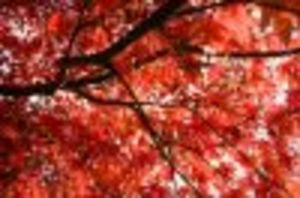The State tree of Hawaii is the Kukui Nut Tree (Aleurites moluccana). The Kukui nut tree is also known as the Indian walnut, candlenut, candleberry, varnish tree, and country walnut. This tree is found in several tropical Asian and Polynesian countries.
The nut tree can grow to a height of 30-50 feet, with an equal canopy spread, and a trunk diameter of 3 feet. The tree prefers moist soils and is often seen growing in valleys and along the coastline. The nut tree grows in a wide variety of soils including basalt, red loams, stony clay ground, sand, and limestone. The nut tree is fast growing with an annual growth rate that can reach 5 feet.
The nut tree is monoecious, having both male and female flowers. The flowers are a pale white with a green tinge. The fruit is an oval, green and brown in color, and 1-2 inches across. The seeds are in a shell that is about an inch across and black in color.
The seeds of the nut tree are commercially prized. Oil from the seeds is used in wood preservatives, varnishes, soaps, waterproofing, rubber substitutes, and some insulating material. Raw seeds are mildly toxic. The kukui oil is also used in cosmetics and lotions and is considered useful in lessening symptoms of dry skin, eczema and psoriasis.
There is a history of home remedies surrounding the nut tree. The oil has been used as a laxative and a hair tonic. The seed kernel has been combined in poultices used to reduce or alleviate headaches, fevers, and joint injuries.
There is no evidence of any published, credible, clinical trials that prove the safety or reliability of any medical or health benefits from the leaves, seeds, kernels, or oil from the nut tree.
The nuts are sometimes polished and used in leis in Hawaii. Native tradition includes many stories of Hawaiian royal monarchs wearing leis and necklaces made with the kukui nuts. The kukui name is also used in the name of a wide variety of commercial businesses and venues in Hawaii, such as Kukui Mall and Kukui Plaza.
The nut tree is a good selection for a shade tree. The trees are also useful as a windbreak planting. The leaves are a gray-green color that adds to the beauty of the trees. The nut tree grows in the wild in many locations throughout Hawaii. The growth habit of the trees depends on the availability of sunlight and room to spread out. When growing close together, the trunks tend to be straighter and taller with branching limited to the upper reaches. When growing singly, the trunks can be distorted and bent, the branches more pendulous and starting closer to the ground level.
The nut tree is propagated from seed. Trees prefer full sun but will tolerate sun shade. Seed germination is high but lengthy (3-4 months), but the trees are not considered to be invasive.
The nut tree has predators, including a variety of fungi.
Sources
Aleurites moluccana, Purdue University, http://www.hort.purdue.edu/newcrop/duke_energy/Aleurites_moluccana.html
California Rare Fruit Growers, http://www.crfg.org/fg/xref/xref-a.html#aleurites_moluccana
Aleurites moluccana, Pacific Island Ecosystems at Risk (PIER), http://www.hear.org/pier/species/aleurites_moluccana.htm
Aleurites moluccana, Species Profiles for Pacific Island Agroforestry, http://www.agroforestry.net/tti/Aleurites-kukui.pdf




